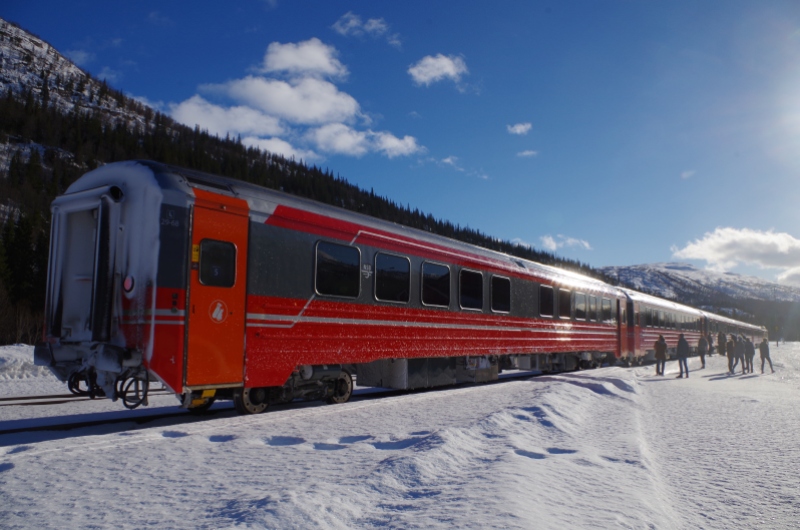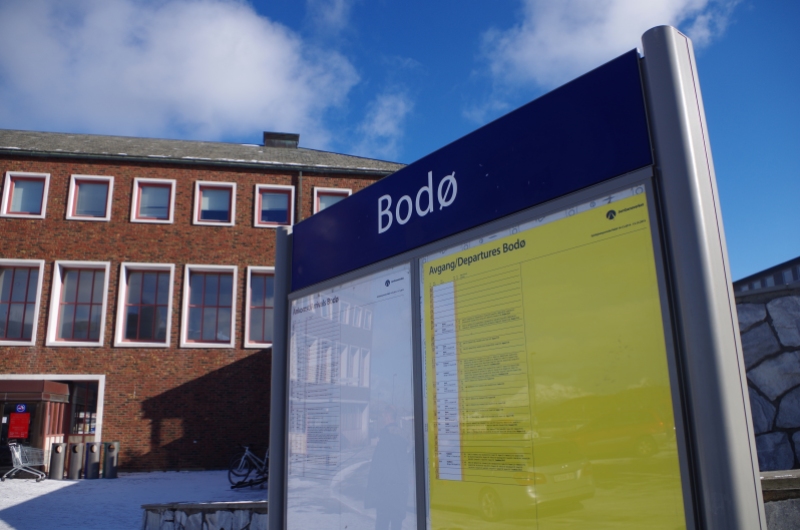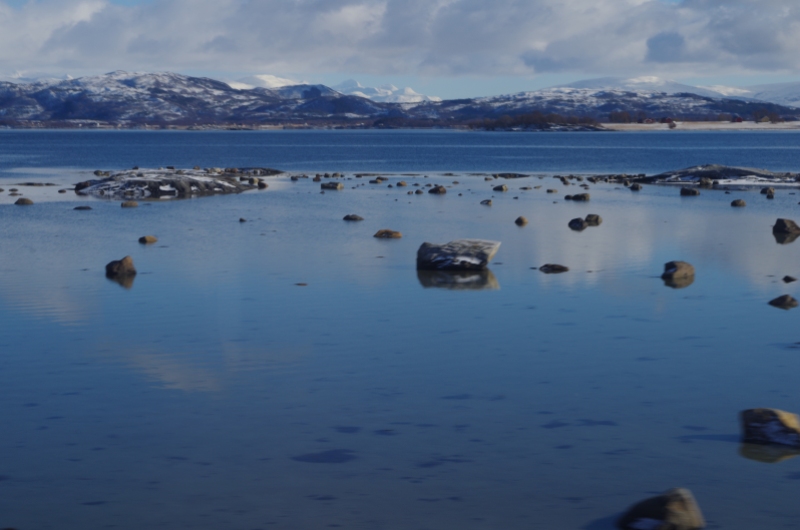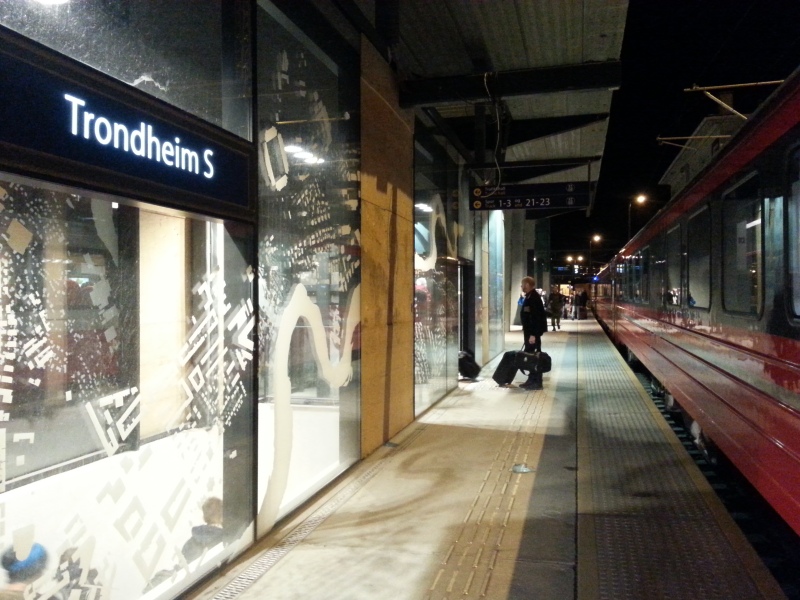After the High North Dialogue wrapped up in Bodø, Norway on March 19, most participants returned home via airplane. Air travel is hugely popular in Norway, much more so than in neighboring Sweden or Finland. The country’s mountainous terrain, fjord-lined coast, and long distances make flying generally the fastest way of crossing intermediate to long distances within Norway. In 2011, three of the top twenty of Europe’s busiest air routes were within Norway, a surprising statistic given that the country only has five million inhabitants. Oslo-Trondheim took sixth place, Oslo-Bergen eighth, and Oslo-Stavanger seventeeth. So when a blizzard forced Oslo’s Gardermoen Airport to shut down for two hours on Thursday, right before one of the busiest travel weekends of the year for Norwegians looking to escape the winter over the Easter holidays, chaos ensued.
Despite the practicality of air travel in Norway, I chose to leave Bodø by train. I traveled along the Nordland Railway from its terminus in Bodø to its southern end in Trondheim 700 kilometers to the south, crossing the Arctic Circle en route. Until 2004, the train used to actually stop at this geographic landmark. While Bodø isn’t home to the northernmost train station in Norway – that title falls to Narvik, about 300 kilometers to the north – it is as far north as you can go in Norway by only traveling on the Norwegian State Railways (NSB) network. To get to Narvik, you’d actually have to travel from Sweden along the Ofoten Line.

The views out my window along the Nordlandsbanen, as it’s called in Norwegian, on that sunny day were everything I’d hoped for. Riding aboard a bright red train zipping under blue skies by blue lakes, red cottages, and white snow, it was like Mondrian had taken a paintbrush to the Arctic. But the peaceful veneer of primary colors obscured a much darker history.





A railroad built by prisoners of war
During World War II under the Nazi occupation of Norway, nearly 13,000 Soviet and Yugoslav prisoners of war constructed the stretch of the Nordland Railway from Mosjøen to Dunderland with the NSB’s full approval. Much of this information has been thrust back in the spotlight in a new book by Bjorn Westlie called Fangene som forsvant (The Prisoners Who Disappeared). The Nazis sought to build the railroad all the way north to Kirkenes, but this proved impossible due to insurmountable conditions and terrain. By the time the war was over, the railroad had only made it as far as Dunderland, still some 200 kilometers from Bodø. In 1962, construction was finally completed on the Nordland Railway as it reached its terminus in this northern Norwegian city.
The Nordland Railway can be added to the long list of massive construction projects in the Arctic that took place during the war. Given the seemingly pristine, untouched nature of much of the Arctic, it’s easy to forget that militaries, forced laborers, and prisoners of war have been responsible for a great deal of its infrastructure. Jernbaneverket, the Norwegian National Rail Administration, admits on its website, “The huge numbers of prisoners of war and the railway became, effectively, an appalling slave camp with atrocious conditions and a high mortality rate.” Yet the NSB website aimed at tourists fails to mention any of this history, instead noting, “The 729 km. long railway crosses the Arctic Circle and takes you through stunning Norwegian scenery…The train is an easy and comfortable way of exploring Northern Norway, whether you are travelling all the way to Bodø or visiting a destination along the route.” But none of this ease or comfort would be available without the suffering of tens of thousands of POWs.
With this dark era now in the past, the railroad has become increasingly important for northern Norway in recent years for both cargo and passengers. Ore, timber, and other goods are moved along the line. Jernbaneverket noted that by 2012, 80% of all goods between southern Norway and the Bodø/Salten area would be transported by rail, mostly on special goods trains. On the day I traveled on a passenger train, it was packed with young adults returning home from their school in the Lofoten Islands playing cards and drinking sjokomelk (chocolate milk), a middle-aged woman knitting, lots of older couples, and one stumbling drunkard. Two trains per day leave Bodø, Norway’s twelfth-largest city, for Trondheim, its fourth largest. One departs during the day while the other is a sleeper train that coasts along the rails under skies frequently lit up by the aurora.
The iron roads of the Arctic
If you’re interested in making a journey in the Arctic by rail, there are several other options in addition to the Nordland Railway. There’s the aforementioned Ofoten Line running from Sweden northwest to Narvik. The main purpose of that railway is to transport iron ore from Kiruna, Sweden to the ice-free port at Narvik, but it also moves people. One railroad in northern Scandinavia that is not open to passengers, however, is the short, 8.5 kilometer-long Kirkenes–Bjørnevatn Line. This privately-owned railway moves iron ore from the Bjørnevatn Mine to the port at Kirkenes. It was the world’s northernmost railway until early 2011, when Gazprom opened the Obskaya-Bovanenkovo Railway to supply the massive natural gas development projects on the Yamal Peninsula. The construction required hefty engineering feats, including building a 3.9 kilometer bridge over a permafrost-laden floodplain.
Though this railway, too, is meant to move cargo, for a pretty penny (€1995.00 in “Premium Class” and €5695.00 in “Platinum Class”), passengers can travel for six days along the so-called “Yamal Polar Express” in a private train organized by the British rail tour company Yamal Polar Express Limited. This rail journey actually connects a number of Arctic railroads in Russia, including the Pechora Railway and the “first part of Stalin’s abortive Trans-Polar Railway.” As part of his delusional vision of transforming and industrializing the Arctic, Stalin had envisioned connecting western and eastern Siberia with a 1,000-kilometer railway. Despite the forced efforts of tens of thousands of prisoners, the railway was never completed. RussiaTrek has some incredible photos of all that remains of the gnarled, rusting iron tracks. Perhaps because the landscapes of forced labor and torture are not so easily hidden in Russia as they are along the Nordland Railway, it is easier to simply mention it up front. “From here the train takes the 1,570-kilometre Pechora Railway with a brief stop to explore Kotlas, centre of the Gulag system of prison and forced labour camps used to construct the railway,” the Yamal Polar Express website plainly states. Tourists, oil barons, and Russian oligarchs now move in the same spaces as the prisoners forced to do back-breaking work in frigid winters and mosquito-ridden summers just fifty years ago. And equally along the Nordland Railway, German rail freight company DB Schenker moves goods and cargos along a railway constructed under Nazi supervision, exemplifying the transformation of militarized spaces into commercial ones across the Arctic.

As the train pulled into Trondheim Central Station under the cover of night, I reflected on the journey I had just taken across the Arctic Circle. Northern Norway was a dreamscape of canoes balanced against cheery red cottages perched on the water and ski tracks sliced into the snow. Yet I could not help but think that seeing all of this from the comfort of my heated carriage was only possible due to the nightmarish experiences that the prisoners of war had to endure.


i want to hear all about this next time i see you…had no idea it was built by POWs…but i’m drooling all over this post in what an amazing experience it sounds and looks to have been